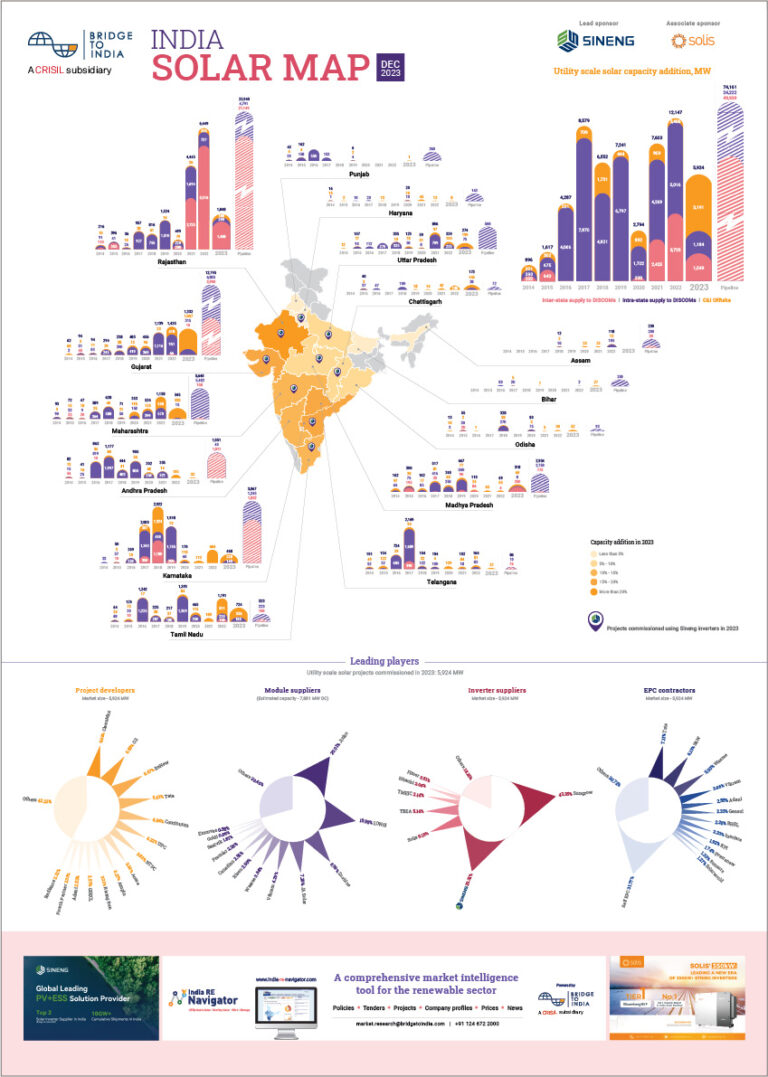India has added 513 MW of rooftop solar capacity over the past 12 months reaching total installed capacity of 1,020 MW. 22% of capacity addition in the last year has been built under OPEX model where a third party project developer finances and installs the system on rooftop owner/consumer’s premises and sells all power output to him under a long-term agreement. This model is extremely popular in the USA where almost half of the rooftop solar installations are owned by specialist OPEX developers such as SolarCity, Vivint, Sunrun etc.
- The OPEX model has been very successful internationally and remains so for Indian consumers who don’t want to incur upfront capital costs but still want to benefit from falling costs of solar power;
- Poor contract enforceability in India poses a significant risk to the growth of OPEX market;
- Given the many fundamental benefits of the OPEX model and its attraction for both the consumers and project developers, policy makers need to urgently focus on addressing this risk for long-term growth of the rooftop market in India;
The OPEX model is extremely attractive for end consumers as all financial, technical and operational requirements for the rooftop solar system are fulfilled by specialist companies. In addition, the consumers get a substantial discount, typically between 20-30% on their grid power cost. As rooftop solar continues to become cheaper in relation to grid tariffs, the OPEX model is becoming more popular and outpacing growth in other parts of the sector. CleanMax, Amplus Solar, Cleantech Solar, Renew Power, Hero Future Energies, Azure Power and Fourth Partner are some of the most active companies in this space and eyeing triple digit growth rates.
However, there is a fundamental risk constraining long-term viability of the OPEX-market. For OPEX developers to make their required return from rooftop solar projects, their clients must consume all solar power and pay for it for the entire contract duration, which is typically 15-25 years. But there are very few counter-parties in the private sector offering an acceptable credit risk over such an extended period. Moreover, the likelihood of customer default for older projects increases with time as solar costs keep coming down. This means that the customer default risk is very high but India’s woefully inadequate legal system is not geared to resolve such disputes expeditiously. In World Bank’s ease of doing business, India has been ranked at 186 out of 189 countries on contract enforcement.
High perception of customer default risk and poor contract enforcement are affecting long-term growth prospects and flow of professional capital into this sector. Most specialist OPEX players remain sub-scale and nearly fully equity financed. Multiple potential solutions have been proposed in different studies including setting up dedicated commercial courts, getting distribution companies (DISCOMs) to intermediate and/or setting up a credit insurance mechanism.
In our view, growth of OPEX business model is absolutely essential for exploiting India’s rooftop solar potential and getting close to the government’s 2022 target of 40 GW. The policy makers need to find an urgent solution to this issue.












